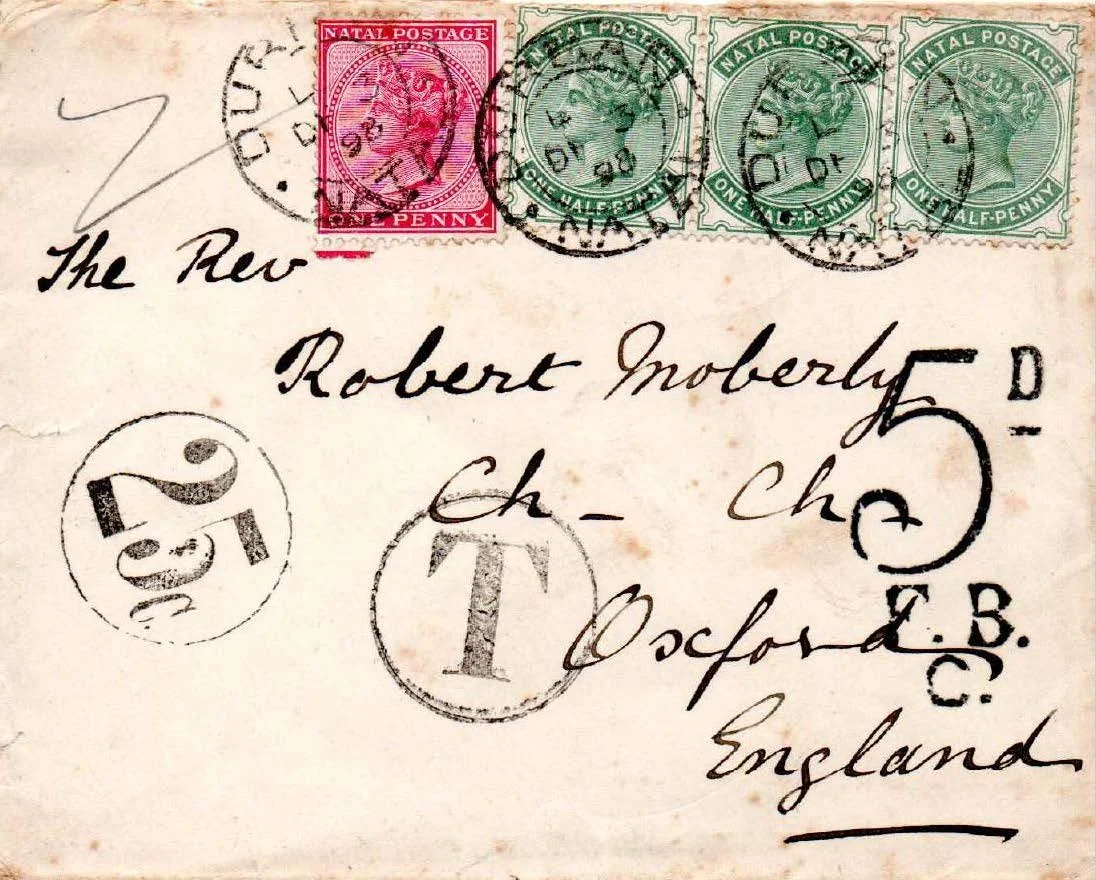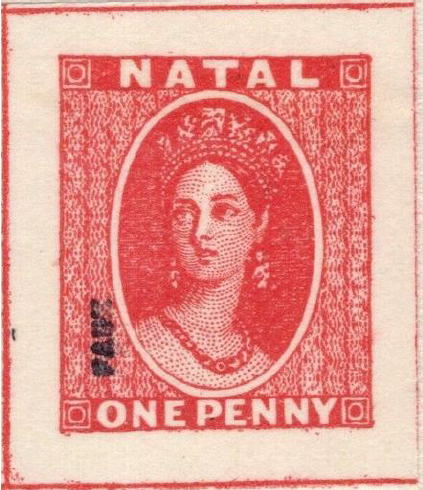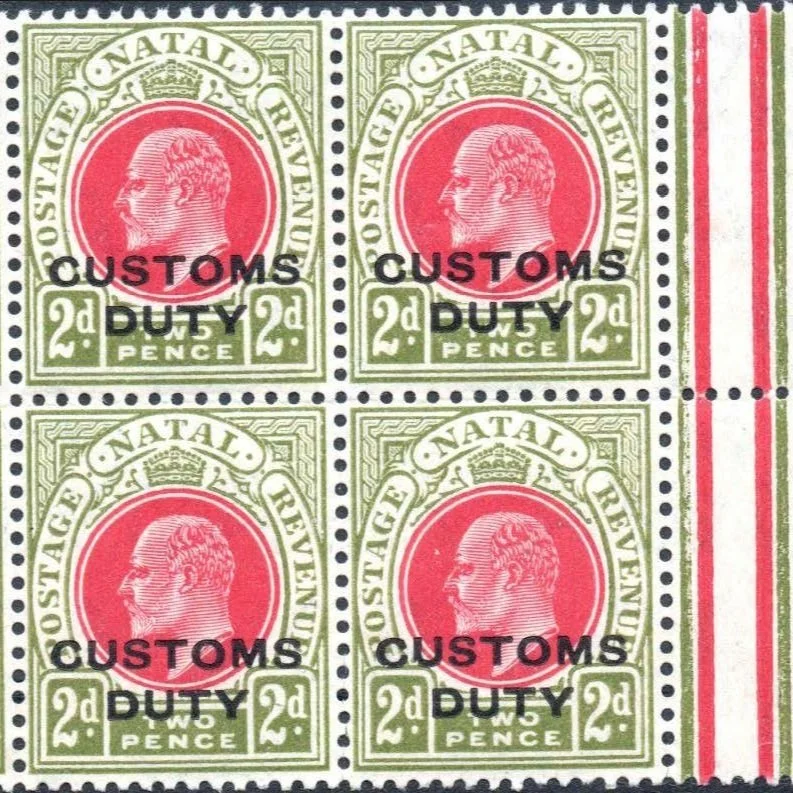Quarterly Journal of the Cape & Natal Study Circle
Journal Topics - September 2025
The September 2025 Journal (Issue 115) includes John Courtis’ informative piece on Wrappers of the Trappist Missions of Natal, with both the history and locations of these missionary monks. Simon Solomon has contributed Two Decorative Trappist Covers which add further colour to the subject. Keith Klugman’s contributions include A Foreign Postcard used in Natal in the 1880s – a most unusual occurrence, the Largest Recorded Franking of the 1885 Half-penny on Cover, and together with some input from me, Further Observations on the POSTAGE overprints of 1877-1879.
Journal Topics - June 2025
The June 2025 Journal (Issue 114) contains Three Enduring Mysteries of the Cape of Good Hope Triangular Issues. It’s 172 years since the first of the Triangulars appeared and they were only prepared for 12 years from 1853 to 1864, yet so varied are the shades of the dyes, especially in the 6d values, that it requires considerable expertise to identify the colours of particular stamps. Fortunately, we have such expertise in Chis Dorn and I think you will enjoy the way he goes about solving the mysteries.
Journal Topics - March 2025
The March 2025 Journal (Issue 113) contains the De La Rue Cape of Good Hope Triangular issues of 1863-64 and Charges for Underpaid Postage on covers sent from Natal as well as arriving in Natal from overseas locations. Keith Klugman continues his tale of Postmaster Provisional Half-Penny Envelopes of Natal, with a number of new findings. Another Natal article, but this one on a completely new aspect of Revenue collecting, is included: Cape, Natal and Southern African Postal Orders.
Journal Topics - December 2024
The December 2024 Journal (Issue 112) contains three Enduring Mysteries of the Cape of Good Hope Triangular issues of 1853-64 are tackled by Chris Dorn in the first of his articles on this subject. John Courtis returns to the Journal and has provided a review of the Cyclopaedia of Overprinted Private Wrappers which contains material from some 217 countries. Roger Porter’s Natal article entitled a Printed Advert on a Newspaper Wrapper demonstrates precisely how interesting these artefacts can be.
Journal Topics - September 2024
The September 2024 Journal (Issue 111) contains an article by Alex Visser and Roger Porter that is part of a major compendium of work entitled Postmarks of Southern Africa. Victorian Natal Postage Stamp Varieties Used on Cover by Keith Klugman examines 11 major varieties. The article Cape Colony – Combination Transvaal and Cape of Good Hope Covers presents a number of covers which were sold in the 2019 Corinphila Besancon Auction.
Journal Topics - June 2024
The June 2024 Journal (Issue 110) contains interesting new articles for Cape, Zululand and CGH. We examine the Reverend Lewis Grout and in particular the Mail forwarded to his Mission at Umsunduzi, Natal in the mid-19th Century. Apart from their religious and social activities, the early Natal Missionaries played an important part in the use and growth of postal services, creating focal places where letters were both sent and received.
Journal Topics - March 2024
The March 2024 Journal (Issue 109) contains interesting new articles for Cape, Zululand and CGH. As has been the practice for some time, the Cape and Natal receive much of the attention, but Zululand, despite having a much shorter duration of stamp issuing than the major Colonies, still frequently provides surprising new finds. For Natal, A Royal Letter from Natal via Bloemfontein and a Double Rate Letter from UK via Marseilles, Suez and Mauritius to Natal in 1865. Overprinted Private Postal Wrappers of the Cape of Good Hope and Natal Region, highlighting the scarcity of this subclass.
Journal Topics - December 2023
The December 2023 Journal (Issue 108) contains interesting new articles for Cape, Zululand and CGH. Keith Klugman’s astonishing curating of 28 Windham/Maclean covers and fronts, which together with three others previously found, must represent one of the largest sets of correspondence in Natal, and possibly Southern African, Colonial history. Provisioned with images contributed by several individuals and organisations, and aided by the work of several authors, Simon Solomon was able to investigate the lives of Juliet Maclean and Her Contemporaries with the aim of reanimating them.
Journal Topics - September 2023
The September 2023 Journal (Issue 107) contains interesting new articles for Cape, Zululand and CGH. Natal: Unique Victorian Stamps and Covers from the Stanley Gibbons July 2023 Auction, which provides commentary on the truly extraordinary items which re-emerged into the philatelic world, … CGH: Two detailed articles have been prepared including: (1) an authoritative study that examines Telegraphs and the 9th War of Dispossession of 1877/78 in the Eastern Cape. (2) The Mafeking Blues, the Broken Plate and Other Errors covering the fascinating story of how this provisional, local issue came about and also present the results of a personal project which has taken over 25 years to complete.
Journal Topics - June 2023
The June 2023 Journal (Issue 106) leads down some familiar, but not fully explored paths, including the origins of two Natal stamps and one from Zululand, which have received little if any coverage in the past. Natal: Keith Klugman has followed up his previous examination of Standard Bank and Natal Bank postal cards with a presentation of a third card prepared by the Bank of Africa. Zululand: The coverage of the 1891 overprinted 1d flows on naturally from the 1887 Natal stamp, both of which include the detached triangle in their portfolios, something which is unique to the Southern African Colonies. CGH: The Cape is presented in two articles, the first being a continuation of the study of the Telegraph Companies of the two southernmost colonies, although the Transvaal also gets a mention.
Journal Topics - March 2023
The March 2023 Journal (Issue 105) includes two articles, replete with illustrations of the British Bechuanaland Police Force and associated material together with a trail of twenty covers addressed to one of the members of the Force, which stretches from East London to Macloutsie in British Bechuanaland between 1891 and 1893. I strongly commend you to follow the trail and examine the detective work that was used in in its construction. The Cape receives further attention, Natal provides a continual source of new material and there is a detailed article on Zululand.
Journal Topics - December 2022
The December 2022 Journal (Issue 104) was inspired by the series of Corinphila Auctions occurring since 2019, offering the magnificent Besançon collections of Australia, Ceylon, East Africa, Great Britain, Southern Africa and the West Indies, have inspired me to extend the gamut of articles included in this Journal, and consider how the Cape, Natal and Zululand were regarded by printers such as De La Rue, not just as stand-alone colonies, but rather as parts of their broader approach to stamp production.












